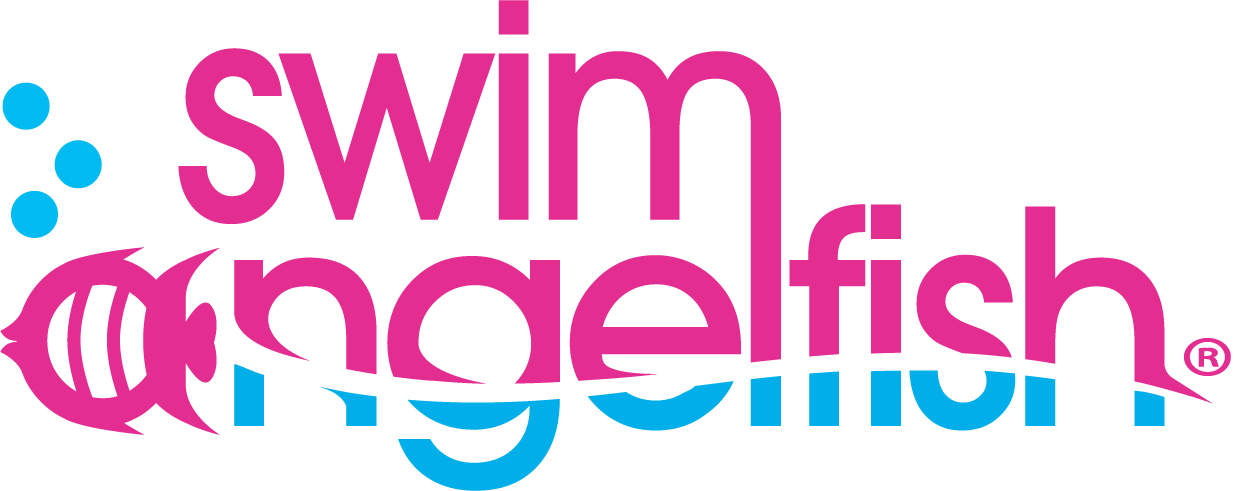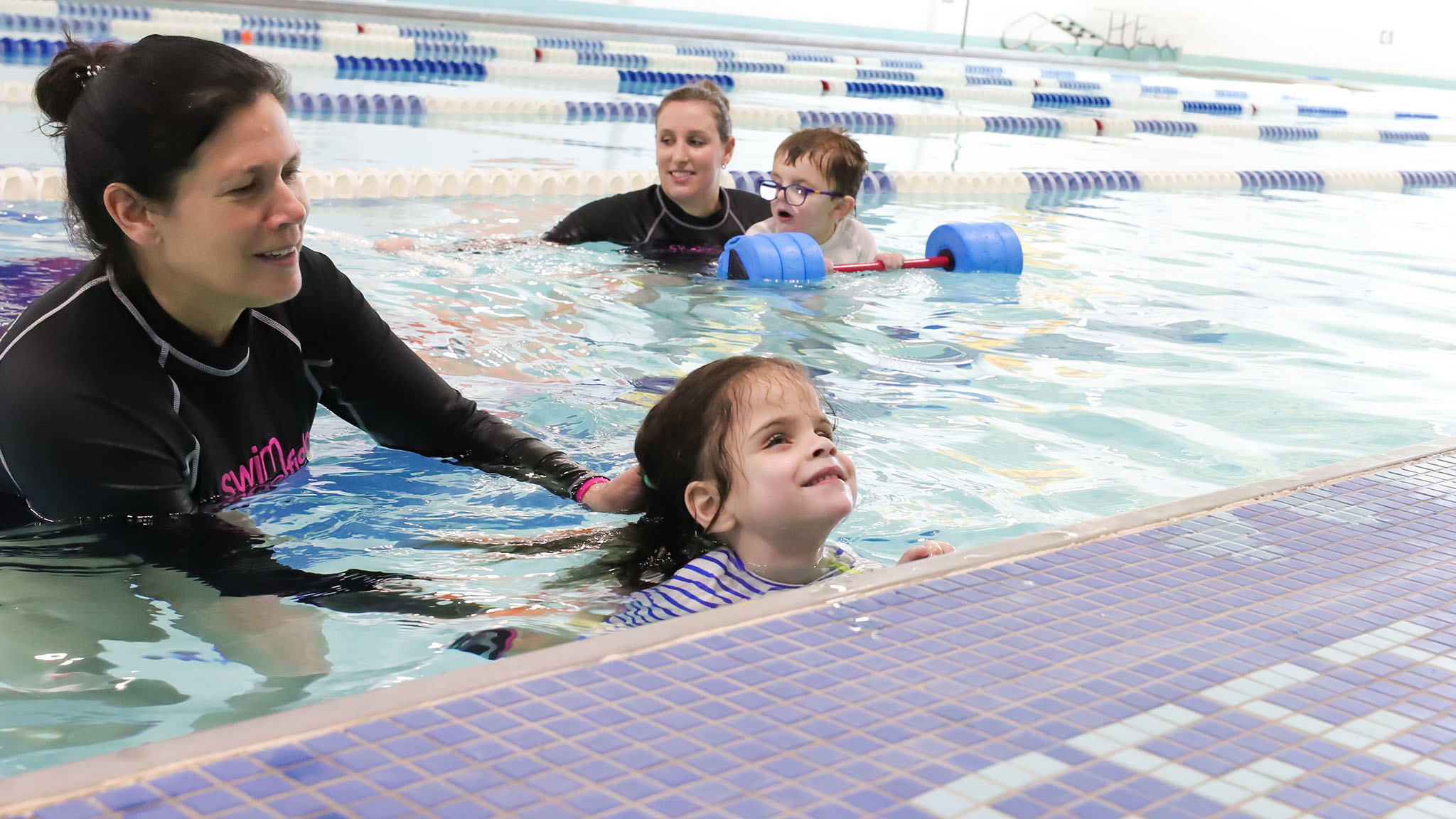
Are you ready to learn more about swimming lessons for swimmers who have a visual impairment? Swimming is an essential skill for children, and it’s no different for those with special needs, including visual impairments.
Many parents ask whether it is possible to teach a child who is blind to swim. Our answer is absolutely yes! Individuals who are blind, have low vision or who have a visual impairment can be successful swimmers, when paired with an adaptive swim instructor who understands their needs.
It can be a struggle to find a swim instructor who has the skills to modify their teaching approach for visual challenges. Our adaptive swim lessons focus on fostering independence while achieving swim skill benchmarks and ensuring safety. We understand that every swimmer is unique, and overcoming learn-to-swim obstacles requires a tailored approach. By applying the Swim Whisperers® methodology, we can identify the correct strategies to help swimmers overcome their challenges.
In our Adaptive Swim Whisperers® program, we have identified three of the most common roadblocks that swimmers who are visually impaired encounter. These roadblocks are ‘Interpreting Touch’, ‘Having Body Control’ and ‘Engagement and Interaction’.
In this blog, we’ll guide you through these roadblocks and share tips on how to teach individuals with a visual impairment to swim.
Identifying the Roadblock: Interpreting Touch
Imagine navigating the water without the gift of sight. For swimmers with a visual impairment, touch becomes a crucial sense for understanding their surroundings. This is because, when you are unable to see, your other senses become even more heightened. Using their sense of touch helps individuals who are blind or experience low vision to identify boundaries and locate the pool’s edge for safety. However, unexpected touch can be startling, triggering a fight-or-flight response. Understanding how touch is interpreted by the swimmer is vital to helping them have an enjoyable experience in the water.
Identifying the Roadblock: Having Body Control
Swimmers with visual impairments often struggle with body control in the water, which causes anxiety. The buoyancy of water reduces gravity, making it challenging to understand one’s position in space. When a swimmer has more control over their body, they tend to have less fear and are able to practice swim skills such as the rollover. This involves moving from prone (on belly) to supine (on back) and helps swimmers with safety and independence. Help your swimmer with vision challenges, practice buoyancy control and gain more feedback from proprioception (input into their muscles and joints). When they feel more in control, their fear diminishes, and they can confidently practice floating and moving in various positions.
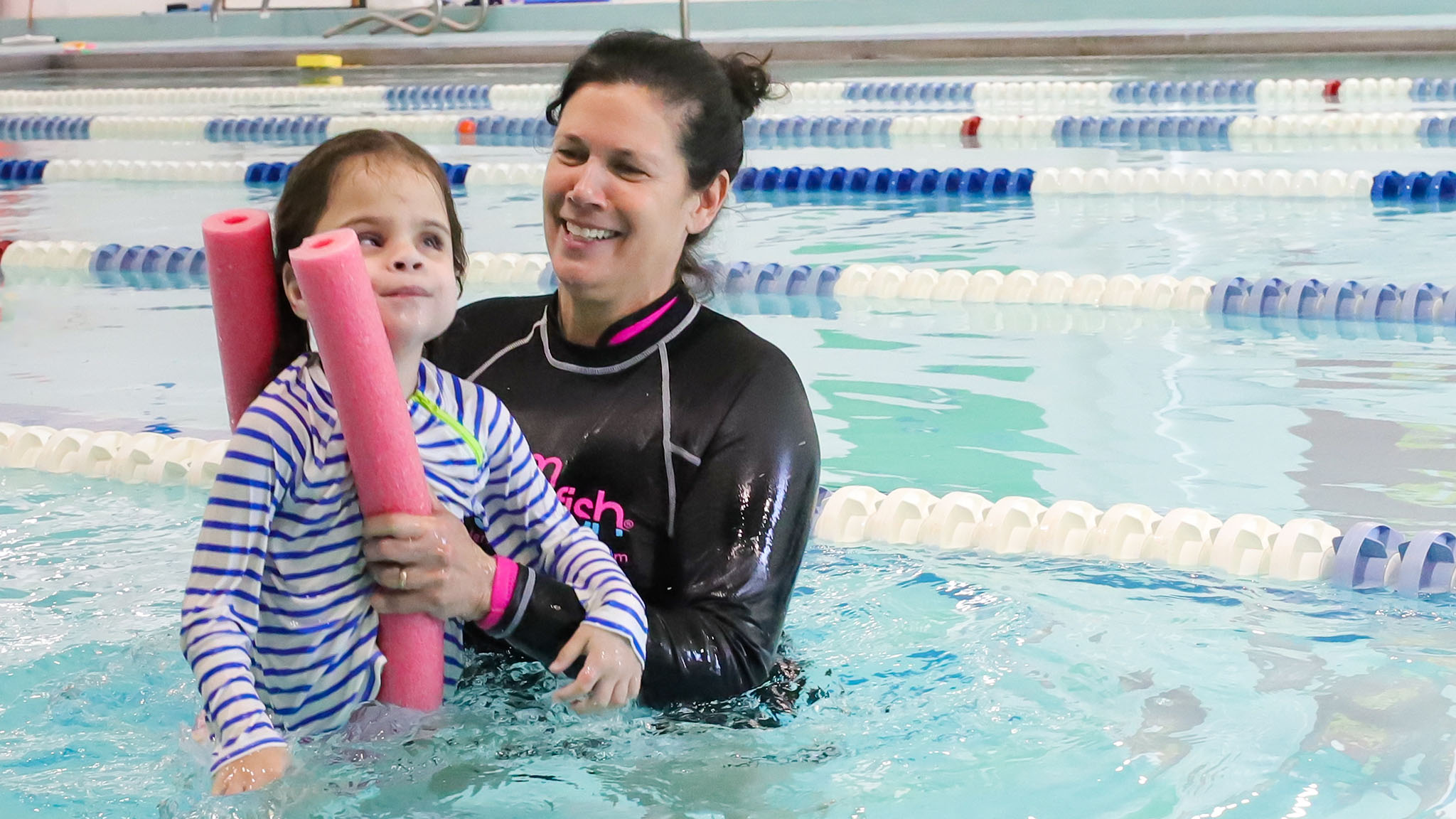
Identifying the Roadblock: Engagement and Interaction
It might seem obvious, but building a strong connection with your swimmer is essential, particularly when they can’t see you. Swimmers with a visual impairment rely heavily on your voice and demeanor to trust and connect with you. Following your swimmers’ lead works really well with this population. For example, one of our swimmers loved spinning and floating on their back and had a hard time moving in a forward direction. By following their lead and starting where they were, we were able to turn the spinning motion into a swim skill (‘spinning and take side’). From there we worked on spinning, lay back and rollover.
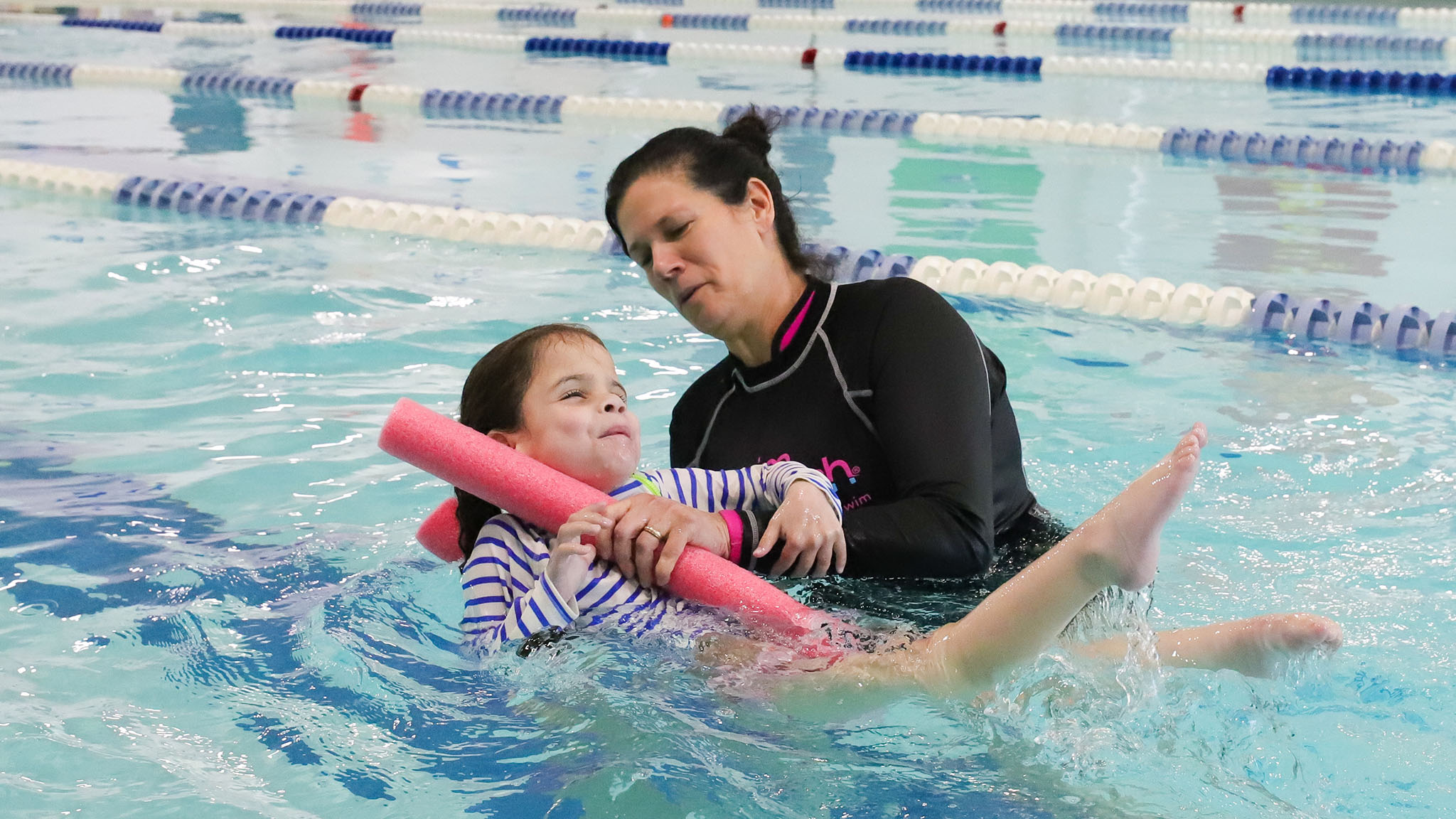
Swim Whisperers® Strategies to Help Swimmers with a Visual Impairment
By combining these strategies with the areas of focus learned in our Adaptive Swim Whisperers® certification program, you can take action, make informed decisions on techniques, and adapt to various situations.
In this video, we use the Swim Whisperers® methodology to help one of our swimmers with a visual impairment achieve independence in the water.
Here are some adaptation tips for swimmers with visual impairments:
Remember, with patience, understanding, and the right strategies, children who are blind, have low vision or a visual impairment can experience the joy and benefits of swimming, just like any other child.
